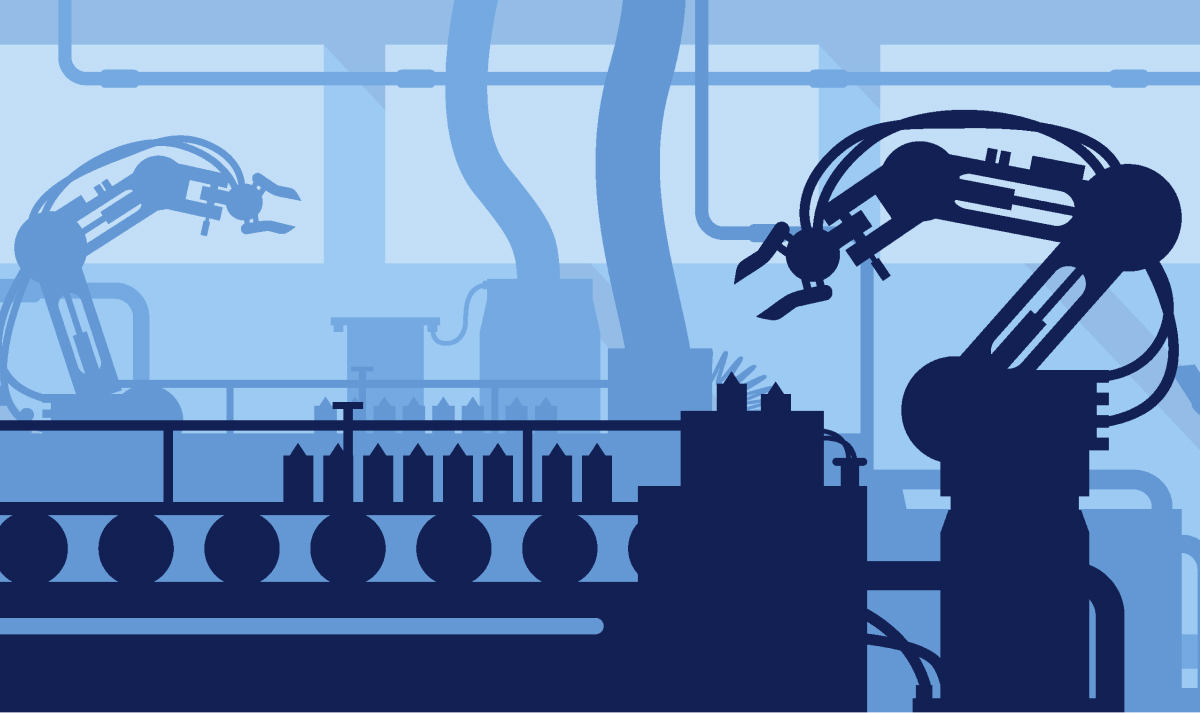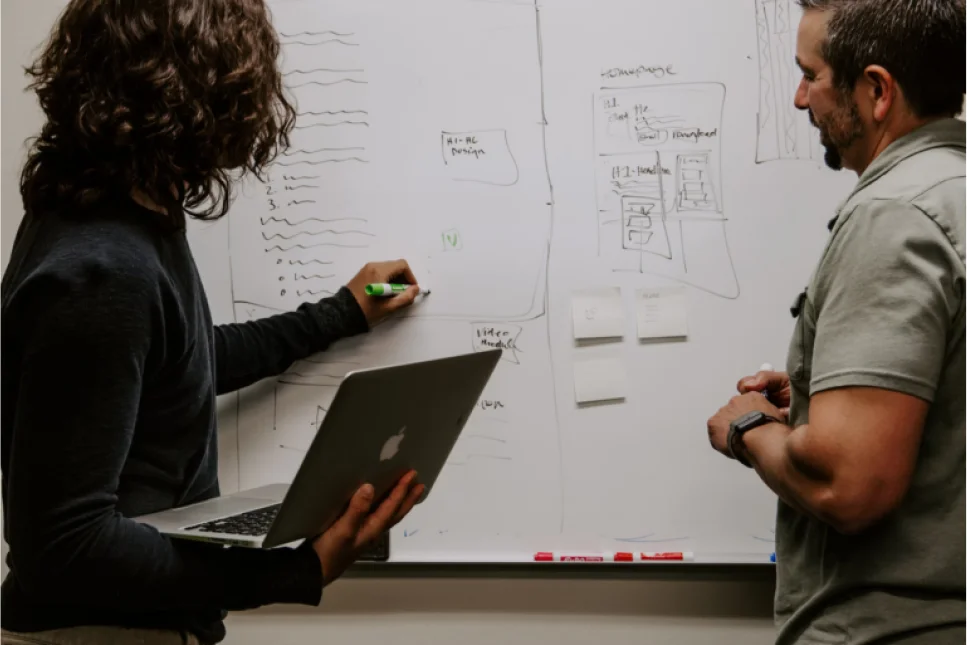Mastering Cost Risk with the CRED Model: A New Approach to Managing Uncertainty

How to Meet the Growing Need to Conduct Dynamic Trade-off Analysis in the Defense and Aerospace Industries
By Mac McDonald, Dan Kennedy, & Jason Kinsfather
When manufacturing or integrating systems for the Department of Defense (DoD), every kilogram of weight saved directly contributes to increased payload capacity or extended operational range. Power efficiency influences mission duration and capability, while cost management ensures systems remain within budget, enabling broader deployment. Achieving these outcomes requires careful trade-off analysis, as adjustments in one area often impact others. This process is known as SWaP-C (Size, Weight, Power, and Cost) Analysis. To effectively address these interdependent challenges, acquisition professionals must consider each SWaP-C element both individually and as part of an integrated whole. Modern approaches to SWaP-C optimization leverage advanced technologies and methodologies to better understand and manage these trade-offs across the system lifecycle. Utilizing DE (Digital Engineering) and MBSE (Model Based Systems Engineering) extensive tradeoff analysis is being performed before any physical hardware is created. Consider the following strategies and improvements for each component:
Size: Reducing Physical Footprint
- Optimization Strategy: Implement modular system designs that allow for flexible configurations, reducing the overall footprint without sacrificing functionality. This approach aligns with DoD’s emphasis on deployability and adaptability. Digital engineering environments enable rapid prototyping and analysis of various configurations, allowing teams to optimize spatial arrangements before physical implementation, reducing costly design iterations, and ensuring optimal use of constrained spaces.
- Actionable Improvement: Encourage the use of compact, high-density components that fit within constrained spaces, supporting operational efficiency in diverse environments. Through model-based systems engineering, teams can validate spatial requirements and component interactions early in the design phase.
Weight: Enhancing Portability and Performance
- Optimization Strategy: Utilize lightweight composite materials that offer strength without the bulk, maintaining system durability in challenging conditions. Operational life utilizing composite materials often exceeds standard metallic construction due to the enhanced fatigue limits of composites. Combined with topology optimization, opportunities exist for extensive lightweighting. Advanced analytical tools can now model composite material performance across the full lifecycle, providing data-driven justification for material selection and helping predict long-term maintenance requirements. Op costs (depot level maintenance intervals) often make the cost trade to carbon composite construction viable.
- Actionable Improvement: Prioritize material innovations that reduce weight while meeting stringent DoD durability and performance standards, enhancing transportability and mission readiness. Virtual testing environments allow for rapid evaluation of material alternatives under simulated operational conditions.
Power: Ensuring Efficiency and Sustainability
- Optimization Strategy: Incorporate advanced power management systems that optimize energy use and extend operational timeframes, critical for mission-critical environments. Digital twin technology enables real-time modeling of power consumption across various operational scenarios, allowing for optimization of power distribution and management systems before deployment. This includes optimizing the performance of gas engines by intelligently controlling fuel consumption, ignition timing, and other parameters based on operating conditions.
- Actionable Improvement: Leverage renewable energy sources and smart power distribution technologies to enhance sustainability and reduce the logistical burden associated with power supply in remote operations. Predictive analytics help forecast power requirements across different mission profiles, enabling more efficient energy management strategies.
Cost: Balancing Affordability and Compliance
- Optimization Strategy: Focus on lifecycle cost management to ensure affordability while maintaining compliance with DoD acquisition standards. This includes evaluating total cost of ownership and return on investment. Cap cost vs op and life cycle cost can often justify the use of state-of-the-art materials and construction. Digital cost modeling tools enable real-time evaluation of design decisions against lifecycle cost implications.
- Actionable Improvement: Incorporate cost-effective manufacturing processes and scalable production techniques that align with DoD procurement strategies, ensuring that systems remain within budget without compromising on quality. Data-driven manufacturing analysis helps identify optimal production approaches that balance quality with cost efficiency.
Advanced Approaches to Enhancing SWaP-C Decision-Making
While these strategies establish a foundation for addressing SWaP-C challenges, the complexity of modern defense systems requires advanced analytical methods. By collaborating with defense industry clients, we utilize the SEER suite of tools to deliver data-driven insights and support informed decision-making. Our experience highlights several opportunities to enhance SWaP-C analysis, including: 1.Digital Engineering Integration
- Acquisition programs are incorporating digital engineering environments tightly integrated with costs, schedule, risk, and requirements management that enable early and continuous SWaP-C analysis throughout the development lifecycle
- Virtual prototyping and modeling allow programs to identify and address SWaP-C constraints before significant resources are committed
- Digital twins facilitate real-time SWaP-C optimization across design iterations and allow for integration with SEER cost twin models to dynamically understand impacts to cost, risk, and schedule
2. Modular Open Systems Approach (MOSA)
- Acquisition strategies now emphasize MOSA principles that enable component-level SWaP-C optimization, leveraging SEER’s component-based analysis capabilities to evaluate individual modules against historical performance data. The tool’s parametric models can assess how different module configurations impact overall system SWaP-C characteristics, enabling more informed decisions about module selection and integration.
- Programs can evaluate and vary modules based on SWaP-C trade studies without impacting overall system architecture, using SEER’s trade-off analysis capabilities to:
- Compare alternative module configurations against baseline performance metrics
- Model the ripple effects of module changes across the entire system
- Project lifecycle cost implications of different module selections
- Evaluate maintenance and sustainment impacts of module alternatives
- Standardized interfaces allow for rapid integration of new technologies with improved SWaP-C characteristics, supported by SEER’s ability to:
- Model interface requirements and constraints
- Assess compatibility of new technologies with existing modules
- Project integration costs and timeline impacts
- Evaluate performance improvements against implementation costs
- Analyze risks associated with technology insertion
Agile Development Practices
- Iterative development cycles include regular SWaP-C assessments as part of sprint reviews, where SEER’s parametric models can provide rapid analysis of design changes against historical performance data. This allows teams to make data-driven decisions about design modifications within the compressed timelines of agile sprints.
- Continuous feedback loops allow programs to adjust requirements and designs based on emerging SWaP-C insights, supported by SEER’s ability to generate real-time trade-off analyses. The tool’s integration capabilities enable automatic updates to cost and performance projections as design parameters change, feeding directly into the feedback cycle.
- DevSecOps practices incorporate automated SWaP-C analysis tools into the development pipeline, where SEER’s API can be integrated into automated workflows to provide continuous assessment of design changes. This automation enables:
- Automatic flagging of design changes that could impact SWaP-C thresholds
- Integration with CI/CD pipelines for continuous performance monitoring
- Early identification of potential trade-off implications
Commercial Technology Integration
- Acquisition reforms are making it easier to leverage commercial innovations that offer SWaP-C advantages, with SEER’s database and analytics capabilities providing:
- Comparative analysis between commercial and bespoke solutions
- Historical performance data to validate vendor claims
- Risk assessment for commercial technology adaptation
- Cost modeling for ruggedization and military specification compliance
- Programs can more readily adopt commercial components that have undergone extensive SWaP-C optimization, using SEER to:
- Model integration costs and technical requirements for COTS implementation
- Project lifecycle sustainment implications of commercial solutions
- Evaluate obsolescence risks and technology refresh cycles
- Analyze supply chain dependencies and vulnerabilities
- Compare total ownership costs between commercial and traditional military solutions
- Market research requirements now explicitly consider commercial SWaP-C benchmarks, with SEER providing:
- Standardized metrics for comparing commercial solutions
- Cost-benefit analysis of emerging commercial technologies
- Impact assessment of commercial technology insertion on cost performance
- Validation of vendor performance claims against historical data
Data-Driven Decision Making
- Advanced analytics tools are being used to conduct sophisticated SWaP-C trade studies, with SEER’s capabilities enabling:
- Multi-variable analysis across design parameters
- Dynamic modeling of interdependencies between SWaP-C elements
- Real-time sensitivity analysis to identify critical design drivers
- Automated generation of trade-off visualizations and reports
- Integration with existing engineering analysis tools and PLM systems
- Machine learning algorithms help identify optimal SWaP-C configurations across large design spaces, leveraging SEER’s:
- Pattern recognition across historical project data
- Predictive modeling for performance and cost outcomes
- Automated identification of high-impact design variables
- Risk assessment based on similarity analysis
- Optimization algorithms for multi-objective trade-offs
- Programs are building SWaP-C databases to inform future acquisition decisions, utilizing SEER to:
- Standardize data collection across programs
- Maintain historical performance metrics
- Track actual vs. predicted outcomes
- Generate benchmarks for future projects
- Enable cross-program learning and insights
- Support continuous improvement of estimation accuracy
Integrating the tools and processes outlined above empowers organizations to effectively optimize SWaP-C, providing actionable insights and supporting informed decision-making. Real-World Applications and Implications
Examples of Galorath SWaP-C solutions that applied these techniques include:
Satellite Systems: A defense satellite program facing stringent weight and power constraints applied advanced SWaP-C methodologies using SEER. Our engineers dynamically evaluated material choices and manufacturing techniques to achieve an optimal balance, ensuring the satellite meets operational requirements without exceeding budget limits.
Mission Alternatives – UAV Design: A UAV program was exploring optimal payload and performance versus cost. Our aerospace engineers designed SEER cost twins and supporting analyses to explore lightweight materials for airframe structures and energy-efficient propulsion systems to extend mission capabilities while adhering to DoD standards.
Airframe Alternatives: Aircraft frequently incorporate advanced composite airframe structures, which, despite higher initial costs, extend functional life, reduce weight, and lower maintenance demands. Using SEER, our engineers have modeled airframe cost impacts to evaluate trade-offs between increased service readiness and payload capacity, providing decision-makers with clear cost insights for new platforms.
Attritable platforms can achieve significant advantages by utilizing cost-effective advanced materials and processes.
A Strategic Path Forward
For DoD and aerospace stakeholders, the key to effective SWaP-C management lies in transforming challenges into opportunities for innovation. By integrating data-driven methodologies and aligning efforts with strategic objectives, organizations can make better decisions, accelerate time-to-market, and gain a competitive edge. The future of system design is about leveraging constraints as drivers for transformative solutions.
Take the next step in optimizing your SWaP-C strategies. Request a consultation with our Services team to explore tailored methodologies and frameworks that empower your organization to excel in modern defense and aerospace operations. Request a Consultation
10 Step Estimation Process Sample Checklist
View our 10 Step Estimating Process Checklist. This checklist should be tuned to the individual company’s needs and suggestions.
Estimating Total Cost of Ownership (TCO)
Find out how you can use Total Cost of Ownership (TCO) model to create an estimate which includes all the costs generated over the useful life of a given application.
Should Cost Analysis
Learn how Should-Cost Analysis can identify savings opportunities and drive cost efficiency in procurement and manufacturing processes.
ROM Estimate: The First Step Towards a Detailed Project Plan
Find out what ROM (rough order of magnitude) estimate is and why is it a crucial element of every project planning cycle.
Software Maintenance Cost
Find out why accurate estimation of software maintenance costs is critical to proper project management, and how it can make up to roughly 75% of the TCO.













